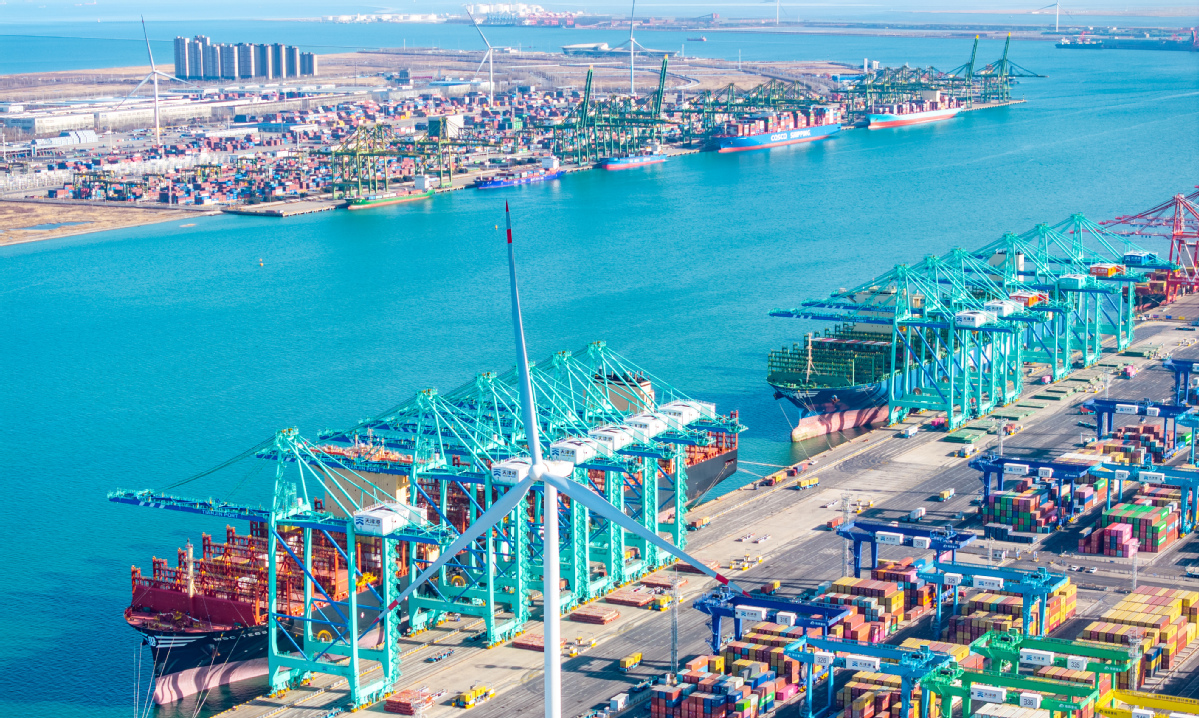China Accelerates Push for Green, Smart Ports

China is moving full speed ahead in transforming its ports into greener and smarter hubs, building or planning more automated terminals than any other country. A new generation of near-zero-carbon ports is also emerging, as the country seeks to lead the world in port innovation and sustainability.
From January to April, Chinese ports handled 110 million containers, up 7.9 percent from the same period last year, according to the Ministry of Transport.
At the forefront is Tianjin Port, which built the world’s first “smart zero-carbon” terminal in just 21 months. The terminal began operation in October 2021 and is powered by technologies including big data, artificial intelligence and 5G. It operates with high efficiency and minimal environmental impact, and has received top national honors for both smart and green performance. It is now considered a replicable model for other ports.
“This project is leading the global shift toward smarter, low-carbon port development,” said Qu Ming, a senior official at Tianjin Port responsible for digital transformation.

Tianjin Port is a major gateway to northern China and a strategic hub in the Belt and Road Initiative. It also serves as the main seaport for Beijing, Tianjin and the Xiong’an New Area. For several years, it has ranked among the world’s top 10 ports.
The port continues to grow. Between January and May, it handled 207 million metric tons of cargo, including 9.93 million containers — up 3.67 percent from the same period last year. It currently operates 37 sea-rail intermodal routes and completed 638,000 TEUs via sea-rail transport. It connects to more than 500 ports in over 180 countries and regions through 147 shipping lines.
Tianjin is also becoming a showcase for green and digital innovation. It has rolled out a fully domestically developed terminal control system, deployed smart connected vehicles in pilot operations, and built China’s first smart monitoring systems for air quality and marine water around a port.

The port is also advancing efforts to shift more cargo from trucks to trains, with rail now handling more than 70 percent of its iron ore shipments — a move seen as more environmentally friendly.
“We’re speeding up the switch to clean-energy vehicles. Right now, all the trucks moving containers inside our terminals run on new energy,” said Li Lei, deputy head of Tianjin Port Group’s environmental department.
“We now have 360 electric container trucks and 132 intelligent transport robots,” said Wang Zhili, a manager in the same department. “Together, they help us cut around 40,000 tons of carbon dioxide emissions each year.”
Looking ahead, China plans to build a group of world-class smart and green ports by 2027. Xu Wenqiang, director of the Ministry of Transport’s science and technology department, said at a recent press briefing that Chinese ports already dominate global rankings — with eight of the world’s top 10 cargo ports and six of the top 10 container ports by throughput located in China.
“China now leads the world in automated terminal construction,” Xu said, noting that Chinese ports also hold the world record for container handling efficiency at automated terminals.












 津公网安备 12019002000128号
津公网安备 12019002000128号

